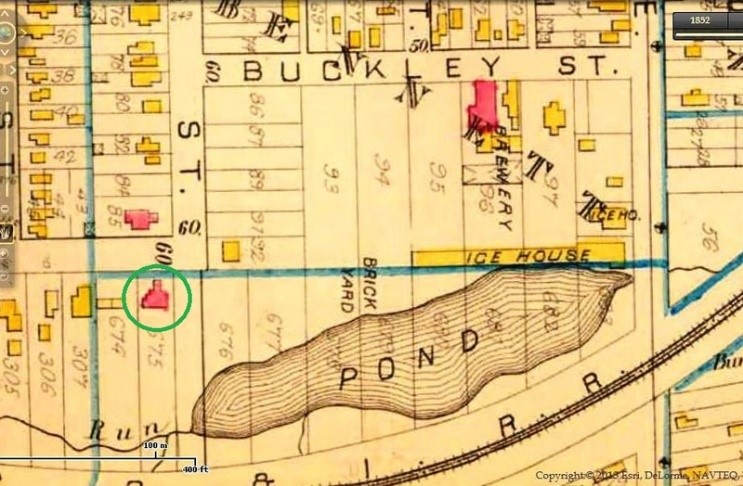Benjamin Tyler, 1803 – 1865
Sarah Tyler, 1809 – 1880
Benjamin F. Tyler was born in Jefferson County, New York, in 1803. He came to Cleveland in 1832 as the principal representative of an investment group from Buffalo, which included his father-in-law, New York state judge Philander Bennett. The out-of-state group had entered into an agreement with two Cleveland merchants, Charles M. Giddings and Norman C. Baldwin, to purchase and redevelop Lorenzo Carter’s 80-acre farm on the west bank of the Cuyahoga River in what was then Brooklyn Township. At the time, the Ohio and Erie Canal was nearing completion and people everywhere were flush with land speculation fever.
The investors, who became known as the Buffalo Land Company, surveyed the land they had purchased and began draining the marsh lands that lay near the Old River Bed and the shores of Lake Erie. The group developed plans for a ship channel (which was eventually built) that was intended to divert lake and river traffic away from Cleveland to their lands. They laid out the streets for commercial and residential buildings. And, along with Josiah Barber and other large land owners to the south, they organized Ohio City (technically, “the City of Ohio”), achieving city status in 1836 several days ahead of Cleveland. Tyler’s partner, Norman Baldwin, became a mayor of Ohio City, while another local partner, Charles Winslow, served as President of Ohio City Council. (Winslow was also father-in-law to C.L. Russell who later famously led the Ohio City forces in the 1836 Battle of the Bridge against Cleveland.)
Tyler, unlike the other investors who were living in Buffalo–then a city eight times the size of Cleveland, decided to settle down and become a permanent resident of Ohio City. He built a home on Detroit Avenue just to the southeast of where St. Malachi church stands today. He and his wife Sarah raised their children there. He built commercial buildings, dealt extensively in real estate, and became a director of the Bank of Cleveland. He served a term on the Ohio City Council and was a vestryman at St. John Episcopal Church. In the 1850s, as sentiment against the Kansas- Nebraska Act led to the creation of the national Republican Party, Tyler became an early convention delegate of that political party in Cleveland.
In 1856, two years after Ohio City was annexed to the City of Cleveland, Tyler purchased the farm land upon which the house at 4403 Fenwick now sits, as a gift to his wife Sarah. Construction of the house was completed in or about 1859.
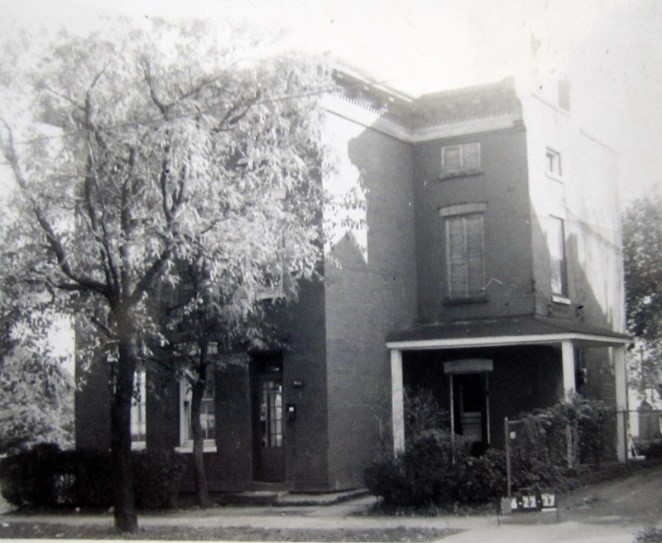
The couple, like many wealthy Clevelanders at the time, had a principal residence in the City. Tyler may have built this house out in “the country” with the hopes that spending time there would improve Sarah’s health. The farm house, shown in this photo as it appeared in 1964, is all brick, box-like and is an Italianate style that is unusual for the City of Cleveland.
Taken in January 2014, this photo shows the house today, sitting very near the bridge over the Big Four railroad tracks–and what at one time was the Walworth Run, which historically separated Cleveland’s west side from its south side.
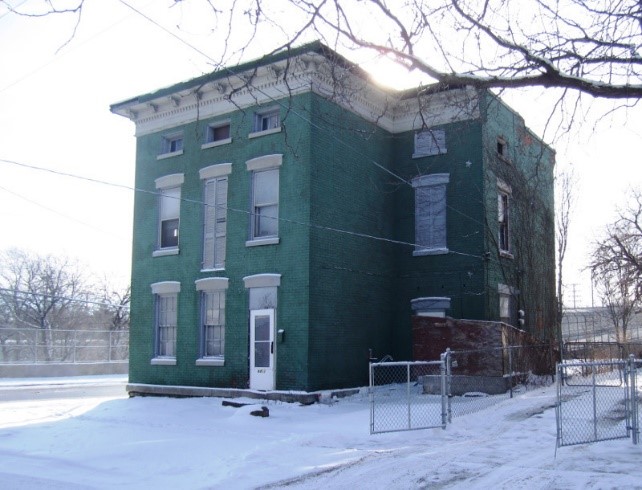
Six years after building the house on Fenwick Avenue, Benjamin F. Tyler succumbed to cancer at age 62. He was buried at Monroe Street Cemetery. After his death, Sarah sold the farmhouse to German immigrants and moved into a house on Franklin Avenue. While the house at 4403 Fenwick has had a number of different owners over the past century and a half, since 1963 it has been owned by one Cleveland family. (This story was borrowed from the Cleveland Historical website and was written by James Dubelko with assistance from Raymond Pianka.)
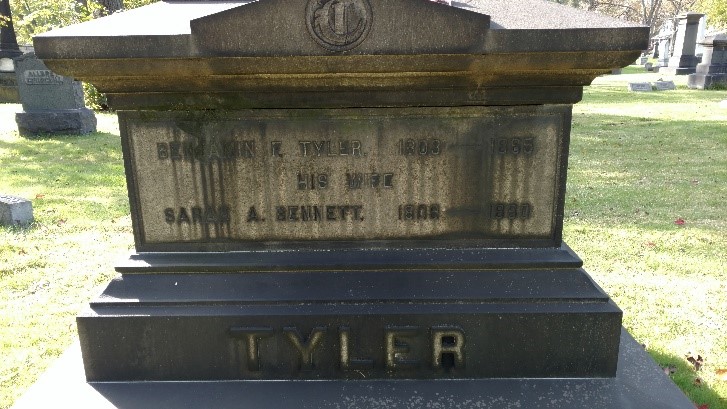
The land north of the Old River Bed of the Cuyahoga River has long been known to Clevelanders as Whiskey Island. In 1835, Ahaz Merchant surveyed the Lorenzo Carter farm for the Buffalo Land Company and noted on his map the names of the streets that were proposed for Whiskey Island. Many of the streets were to be named after the investors themselves, including, in addition to Benjamin F. Tyler, John B. Macy, Sheldon Thompson, Norman C. Baldwin, Hiram Pratt, Major Andre Andrews, and Charles M. Giddings (mispelled as “Gidings”).
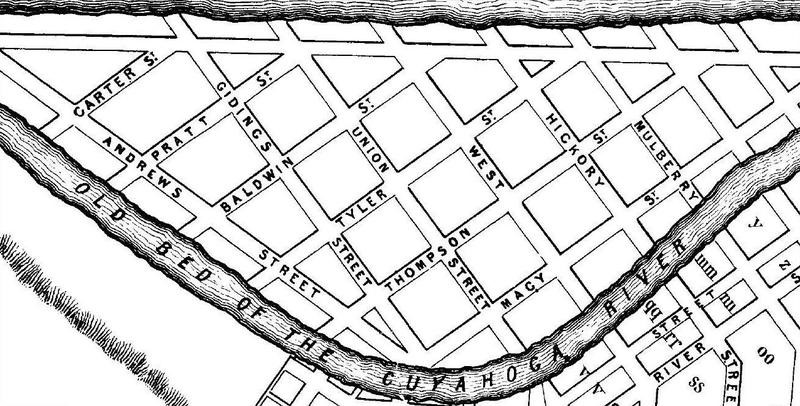
Founded in 1834, it served as one of Cleveland’s two principal banks in the wild decade of the 1830s. In addition to his many other business enterprises, Benjamin F. Tyler served as a director of the Bank of Cleveland, as this January 1, 1838 statement shows.
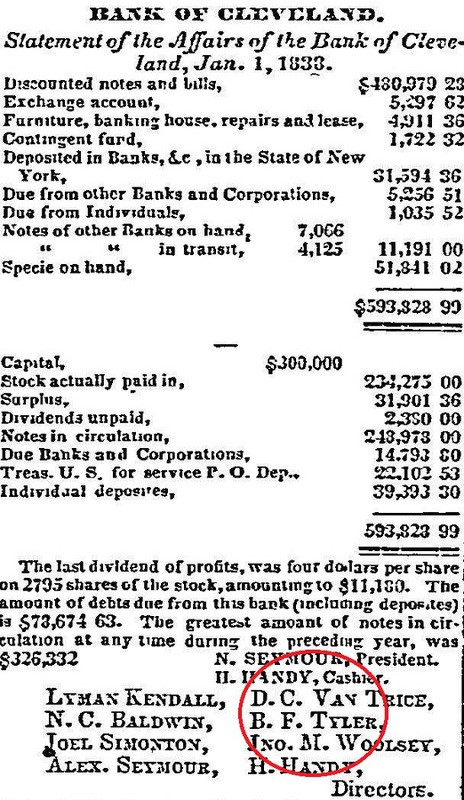
This 1874 map shows the location of B. F. Tyler’s residence on Detroit Street (now “Avenue”)–just south of St. Malachi Church which is identified as a “Cathedral.”. This was the principal residence of Tyler and his family from at least as early as 1845 until his death in 1865. The small street bisecting the property was known as Tyler Lane. It was created after his death when his daughter Helen subdivided the property. The Detroit Avenue Tyler house no longer exists. It may have been razed in 1877 to make room for the Superior Viaduct which opened to traffic in 1878.
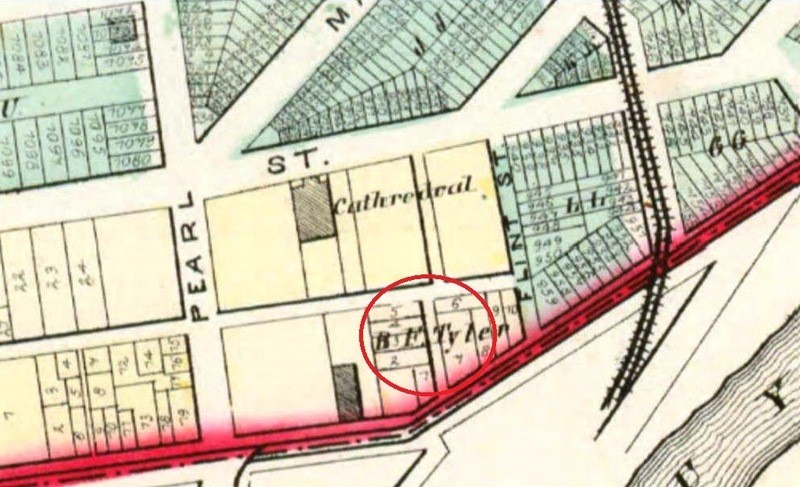
As late as 1859, Benjamin Tyler undertook a major commercial enterprise in what was formerly Ohio City. In that year, he took over the Commerce House at the corner of Main and W. River Streets, which had been partially destroyed by fire, and rebuilt it into a hotel with retail shops on the first floor. This ad by Tyler appeared in the Cleveland Plain Dealer on September 21, 1860.
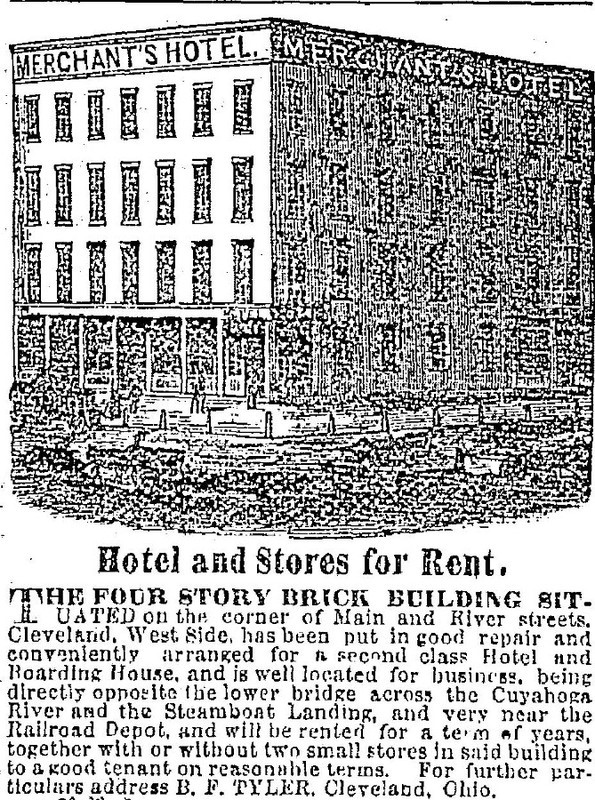
After Benjamin F. Tyler’s death in 1865, his widow Sarah sold the farmhouse (circled in green). By 1881, the year this map was drawn, the neighborhood had changed considerably. The Walworth Run had been dammed, creating a large pond just southeast of the house. Near the pond an ice house had been built. During this period, George and Mary Steiger, immigrants from Baden, Germany, owned and resided in the farmhouse. Further evidence of the growing German presence in this neighborhood is the brewery shown on Buckley Street. Founded in 1868 by German immigrant George Muth (also buried at Monroe Street Cemetery), it later became a facility of the Cleveland Sandusky Brewing Company.
